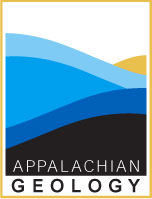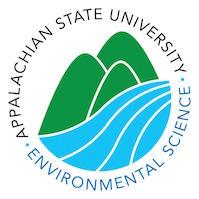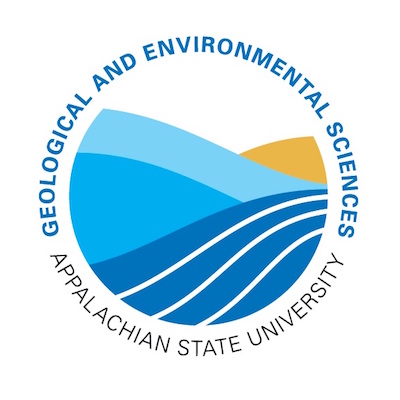In Spring of 2017, the College of Arts and Sciences merged the Environmental Science Program into the Geology Department. The new name for the combined Geology Department and the Environmental Sciences Program is the Department of Geological and Environmental Sciences.
This merger does not change the essential character of the Geology Department, which our current students and alumni know and love, nor does it change the interdisciplinary nature of the Environmental Sciences program curriculum.
The two logos have also been combined into a new logo:



The academic advisory board for the Environmental Science curriculum consists of the following faculty members:
Bob Swarthout (Environmental Science Program Director)is an environmental chemist who studies the impacts of naturally produced organic compounds and organic pollutants derived from unconventional natural gas and oil production on air quality, water quality, and climate using gas chromatography and mass spectrometry techniques. He teaches Biogeochemical Cycles, Preparation for Careers in the Geological and Environmental Sciences, Environmental Science Field Methods, and related classes in the Chemistry Department.
William Anderson (Geological and Environmental Sciences) is a hydrogeologist, and teaches Water - Mountains to Sea as well as Hydrogeology and Engineering Geology.
William Armstrong (Geological and Environmental Sciences) is a glaciologist who teaches required classes in the Environmental Sciences track (Engineering Geology, Preparation for Careers in the Geological and Environmental Sciences).
Carol Babyak (Chemistry Department Representative) is an environmental chemist who studies water quality, metal speciation using electrochemical methods, and environmental endocrine disruptors using solid phase extraction and high performance liquid chromatography.
Sarah Carmichael (Geological and Environmental Sciences) is a biomineralogist and geochemist with prior experience in the environmental industry, and teaches courses such as Preparation for Careers in the Geological and Environmental Sciences and an elective associated with environmental sciences (Energy Extraction in Appalachia).
Ellen Cowan (Geological and Environmental Sciences) is a geomorphologist and glacial sedimentologist who teaches classes for students in the Environmental Sciences program (Geomorphology).
Mike Madritch (Biology Department Representative, Dean of the College of Arts and Sciences) studies biodiversity changes, shifts in climate, and invasive species and their influences on ecosystems.
Sarah Evans (Geological and Environmental Sciences) is a hydrogeologist who studies the dynamics of ice hydrogeology, and teaches required classes in the Environmental Sciences track (Hydrogeology).
Scott Marshall (Geological and Environmental Sciences) is a geophysicist who works on problems in structural geology and neotectonics, and teaches a variety of classes in the Environmental Sciences track (Geophysics, Quantitative Methods).
René Salinas (Mathematics Department Representative) is a mathematical ecologist who develops spatially explicit models to investigate spatial control problems in wildlife populations.
Lauren Waterworth (Geological and Environmental Sciences) is a geologist and environmental lawyer. She teaches several classes in the Environmental Sciences tracks (Environmental Regulation and Enforcement, Issues in Environmental Geology).